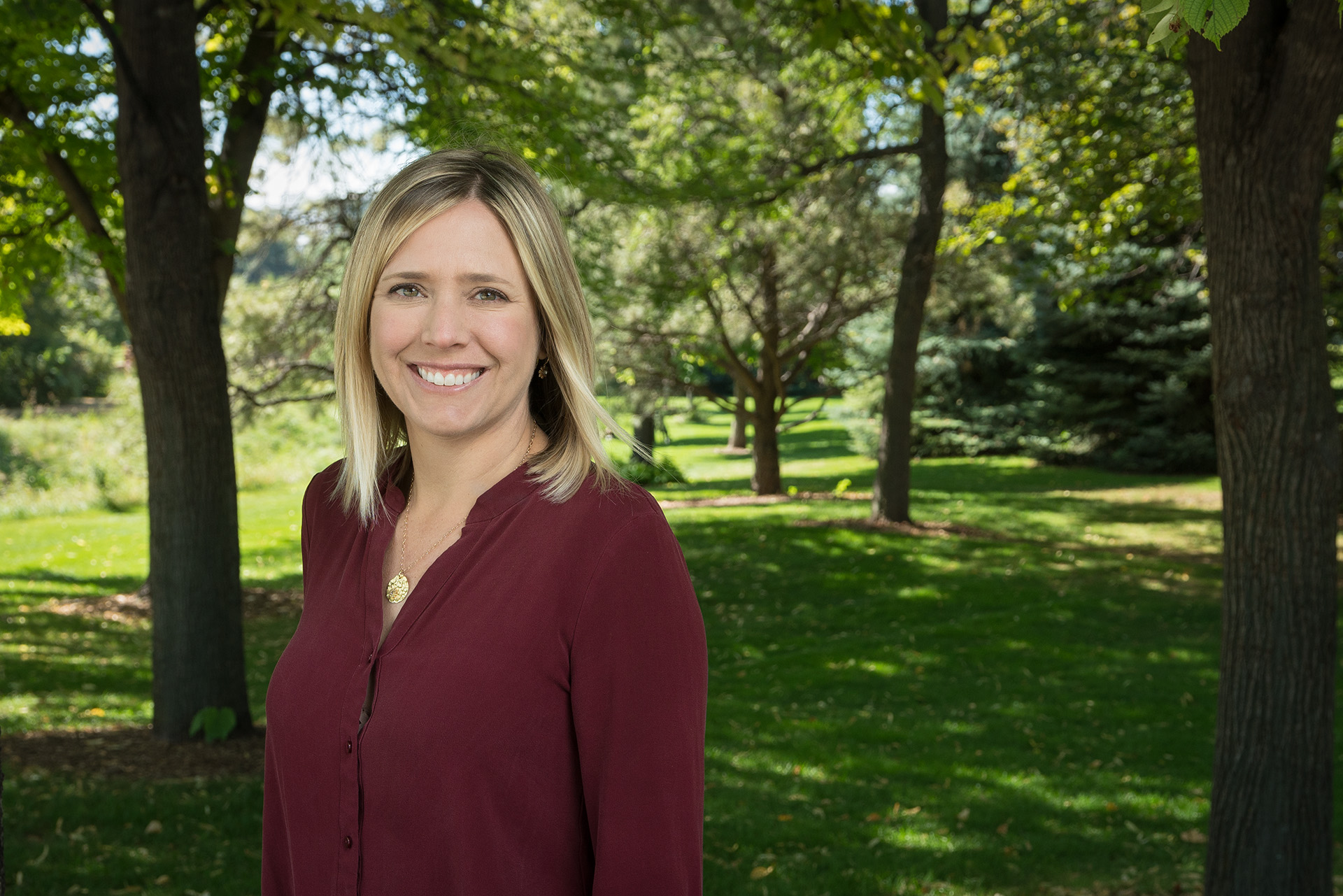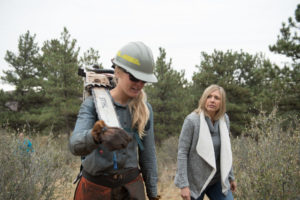
Courtney Schultz’s interest in forest policy began during her days as an instructor with Outward Bound in Montana. Her work puts her at the nexus of science, law and land management. Photo by Joe Mendoza/CSU
As a nationally known forest policy expert, Colorado State University Associate Professor Courtney Schultz has a great appreciation for the outdoors. But it’s hardly the sole focus in her life.
While an undergraduate pursuing a degree in international relations at Stanford University, she was a member of the women’s golf team. Schultz also learned Swahili and spent time writing about women’s issues as a student in Kenya during her days as a Cardinal.
Her interest in the people and places in East Africa led her to create what has become the Western Kenya Education Organization, which for the last 20 years has helped young people, especially young women who have lost their parents, pursue high school and college degrees.
Schultz is the first person from her immediate family to finish college and to obtain graduate degrees. She hails from a family that works in television and the music business. Her mother, Emmy Award-winning actress Vicki Lawrence, rose to fame after landing a job with The Carol Burnett Show in the late 1960s. More recently, she played Margaret in The Cool Kids on FOX.
“They used to say, ‘You’ve been in school so long!'” said Schultz, reflecting back on her route from Stanford to the University of Maryland — for a master’s degree in conservation biology and sustainable development — and the University of Montana, for a doctoral degree in forest policy.
“They’re really proud of me now,” she added.
At the nexus of science, law and land management
Video by John Anderson/CSU
Schultz worked as a high school teacher in Maryland and California after finishing her master’s degree. She taught Advanced Placement, or AP, biology, and said this role was a “dream job.”
During summer breaks, she worked in the mountains in Montana for Outward Bound, which provides experience-based outdoor learning and leadership programs for young people and adults.
On one of her Outward Bound trips, she and her students camped in an area that had been clear cut, trying to stay safe while fires burned in a mountain range just miles away. Ash rained down, and at one point the students watched a firefighter parachute in to extinguish a fire that had just started from a lightning strike.
“Those experiences showed me that forest management is really complex,” she said. “My Outward Bound days really led me to where I am today.”
Schultz decided to pursue a doctoral degree so that she could continue to teach but also pursue research on the public lands she’d come to love. Her current role puts her at the nexus of science, law and land management.
Prior to joining the faculty at CSU, Schultz was a presidential management fellow with the U.S. Forest Service, where she worked on the largest forest restoration project in the nation in Flagstaff, Arizona.
Enlightening policymakers, students

Through her research, she is currently looking at the impact of forest management and the role of forests in carbon sequestration and climate cycles. This work is funded by the National Science Foundation.
“We know forests matter for climate change and carbon cycles,” she explained. “A lot of research is focused on how much forest is out there, but we aren’t looking at what we are doing with the forest, and whether or not different management approaches could provide opportunities for forests in the U.S. to serve as carbon sinks. We also need to explore where we focus on mitigation versus adaptation.” A carbon sink occurs naturally and holds and stores carbon, mitigating the effects of climate change. Adaptation involves changing in the face of new conditions.
Schultz is also working on several research projects that are funded by the Joint Fire Science Program, a partnership of federal agencies in the departments of agriculture and interior.
She travels frequently to Washington, D.C., and other parts of the country to brief policymakers and heads of federal and state agencies about her research and projects. In recent years, she has been focusing on fire management.
When approaching lawmakers, government leaders and their staff, she’s learned to be concise, arriving with a one or two-page policy brief instead of a lengthy digest or research paper. She’s also learned the importance of being a good listener.
“It’s really valuable to hear what their concerns are, and what their constituents’ concerns are,” she said. “Congressional staff are dedicated to what they do, and they’re incredibly knowledgeable. I learn so much from interacting with them.”
Tony Cheng, professor in the Department of Forest and Rangeland Stewardship and director of the Colorado Forest Restoration Institute, described Schultz’s career path as “amazing.”
“Her experiences and background are a good lesson for any young person to know that if you make a choice and commit to it, things will work out,” he said. “Everything that I know of Courtney, every choice she’s made in her professional development, she went all in and dedicated herself to it. That’s a good lesson.”
Aleksandra Pitt, who earned her master’s degree at CSU while working with Schultz, described the researcher as a role model.
“She’s approachable, humble and a really strong and independent woman,” said Pitts, who now works with the National Park Service in Denver. “She gave me the space to explore but also gave me great guidance, helped me find research that spoke to me and helped me develop a great thesis.”
Schultz is the lead author of “Collaborations and capacities to transform fire management,” published online by the journal Science on Oct. 3. She teamed up on the study with Cassandra Moseley, research professor in the Institute for a Sustainable Environment at the University of Oregon.
Schultz, working with her students, has published numerous policy briefs, practitioner papers, journal articles and a recent book, “A New Era for Collaborative Forest Management: Policy and Practice insights from the Collaborative Forest Landscape Restoration Program.”